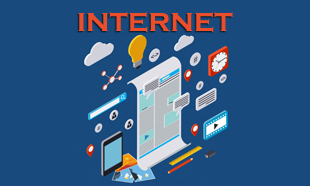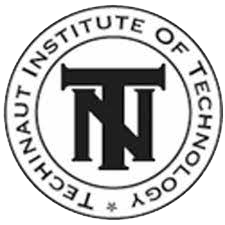0
Internet" course at GD Computer Class, a Techinaut Institute of Technology franchise in Una, Gir Somnath, Gujarat, provides comprehensive training on internet fundamentals, safety measures, web browsing, email communication, online banking, and other essential internet skills for modern-day usage.
INTERNET
GD Computer Class, located in Una, Gir Somnath, Gujarat, offers a specialized 6-month course in Internet usage. This program, operated as a Techinaut Institute of Technology franchise, is designed to equip students with comprehensive knowledge and practical skills. These skills are essential for effectively utilizing the Internet for various purposes. The structured curriculum covers topics ranging from the basics of the Internet to advanced online activities like web development and social media usage. Through hands-on training, students will develop the practical skills needed to become proficient Internet users.
THE OBJECTIVE OF THE COURSE:
The primary objective of the Internet course at GD Computer Class is to empower students with the necessary skills and knowledge to navigate the Internet safely and efficiently. By the end of the course, students will be able to:
- Understand the fundamentals of the Internet and its applications.
- Navigate the World Wide Web and utilize online research, communication, and entertainment resources.
- Recognize and mitigate risks associated with online activities such as viruses, spam, and cyber threats.
- Utilize various online tools and platforms for communication, collaboration, and productivity.
- Develop basic web development skills and create personal websites or blogs.
- Explore the social aspects of the Internet, including social media usage and online gaming.
- Apply critical thinking and problem-solving skills to address common Internet-related challenges.
COURSE OVERVIEW:
Section 1: What’s So Great About the Internet, Anyway?
Students explore the significance of the Internet in modern society, including its impact on communication, information access, and global connectivity.
Section 2: Is the Internet Safe? Viruses, Spyware, Spam, and Other Yucky Stuff
This section covers Internet safety and security measures, including protecting against viruses, spyware, and spam. Students learn about safe browsing habits and security software.
Section 3: Kids and the Net
Students learn about Internet safety for children, including parental controls, safe browsing tips, and educational resources for young Internet users.
Section 4: Assembling Your Gear and Climbing on the Net
Students learn about the hardware and software requirements for Internet access, including computers, routers, and web browsers.
Section 5: Connecting with Wi-Fi, Laptops, and Smartphones
This section covers Internet connectivity methods, including Wi-Fi, mobile data, and tethering. Students learn how to connect laptops and smartphones to the Internet.
Section 6: Welcome to the Wild, Wonderful, Wacky Web
Students explore the World Wide Web and its vast websites, services, and content. They learn about different types of websites and online resources.
Section 7: Taking Your Browser for a Spin
This section covers web browser basics, including navigating websites, using bookmarks, and managing browser settings. Students gain practical experience with popular web browsers.
Section 8: Needles and Haystacks: Finding Almost Anything on the Web
Students learn effective search strategies for finding information online using search engines like Google. They explore advanced search techniques and evaluate search results.
Section 9: Music and Video on the Web
This section covers streaming music and video services, including YouTube, Spotify, and Netflix. Students learn how to discover and access multimedia content online.
Section 10: More Shopping, Less Dropping
Students explore online shopping websites and learn about e-commerce platforms, payment methods, and security measures for safe online transactions.
Section 11: Banking, Bill Paying, and Investing Online
Students learn about online banking and financial management tools, including accessing accounts, paying bills, and managing investments securely over the Internet.
Section 12: Swiping Files from the Net
This section covers file sharing and downloading from the Internet, including legal and ethical considerations. Students learn how to download files safely and responsibly.
Section 13: It’s in the Mail: Sending and Receiving E-mail
Students learn about electronic mail (e-mail) and how to create, send, receive, and manage e-mail messages using e-mail clients like Gmail and Outlook.
Section 14: Keeping Your Mail Safe from Viruses, Spam, and Wi-Fi Snoops
This section covers e-mail security best practices, including protecting against viruses, spam, and phishing attacks. Students learn how to recognize and avoid e-mail scams.
Section 15: Putting Your Mail in Its Place
Students learn about e-mail organization and management techniques, including creating folders, filters, and rules to organize and prioritize e-mail messages.
Section 16: Typing and Talking on the Net
This section covers online communication methods, including instant messaging, chat rooms, and video conferencing. Students learn how to communicate effectively and safely online.
Section 17: Games and Worlds on the Web
Students explore online gaming and virtual worlds, including popular gaming platforms and multiplayer online games. They learn about gaming communities and online safety in gaming environments.
Section 18: Making a Splash Online
Students learn about creating and sharing online content, including blogging, social media, and content creation platforms. They explore ways to showcase their talents and interests online.
Section 19: Blogs and Twitter
This section covers blogging and microblogging platforms like WordPress and Twitter. Students learn to create and manage blogs and microblogs to share their thoughts and experiences online.
Section 20: Making Your Website
Students learn about website creation and development tools, such as website builders and content management systems. They also gain practical experience designing and publishing their websites.
Section 21: Ten Problems and Ten Solutions
This section covers common Internet-related problems and solutions, including troubleshooting tips and resources for resolving technical issues.
Section 22: Ten Fun or Worthwhile Things You Can Do Online
Students explore ten fun and worthwhile activities and experiences available on the Internet, including online learning, virtual travel, and creative projects.
CONCLUSION:
The Internet course at GD Computer Class offers comprehensive training in Internet usage, covering a wide range of topics from primary Internet navigation to advanced online activities like web development and social media usage. The course is structured in a way that allows students to gradually build their skills and knowledge, starting with the basics and progressing to more advanced topics. Through a combination of theoretical learning and practical application, students develop the skills and knowledge to navigate the Internet safely and efficiently. This empowers them to harness the full potential of the World Wide Web for personal and professional purposes. Join us at GD Computer Class and embark on a journey to become a proficient Internet user.


